Abstract
The subcutaneous route (s.c.) was used to study the adjuvant effect of Bordetella pertussis vaccine (pv) on the primary antibody response to sheep erythrocytes. The reasons for using the s.c. route are discussed. PV, besides enhancing the hemagglutinin response, also markedly increased the number of plaque-forming cells in the draining lymph nodes. A heated preparation of PV was tested and found to possess significant adjuvant activity. Interestingly, the enhancement occurred in the absence of marked enlargement of the lymph nodes, which was characteristic of the unheated preparation. In addition, a crude solubilized cell-free preparation of PV was tested and also found to possess significant adjuvant activity. The activity was only partially abolished by heat. Hence, it was concluded that both heat-labile as well as heat-stable factors contributed to the adjuvanticity of PV. The studies also support the view that the draining lymph nodes represent a principal locus of action of PV and that the s.c. route of administration of adjuvant and antigen provides a suitable model for studying and assaying the adjuvanticity of PV.
Full text
PDF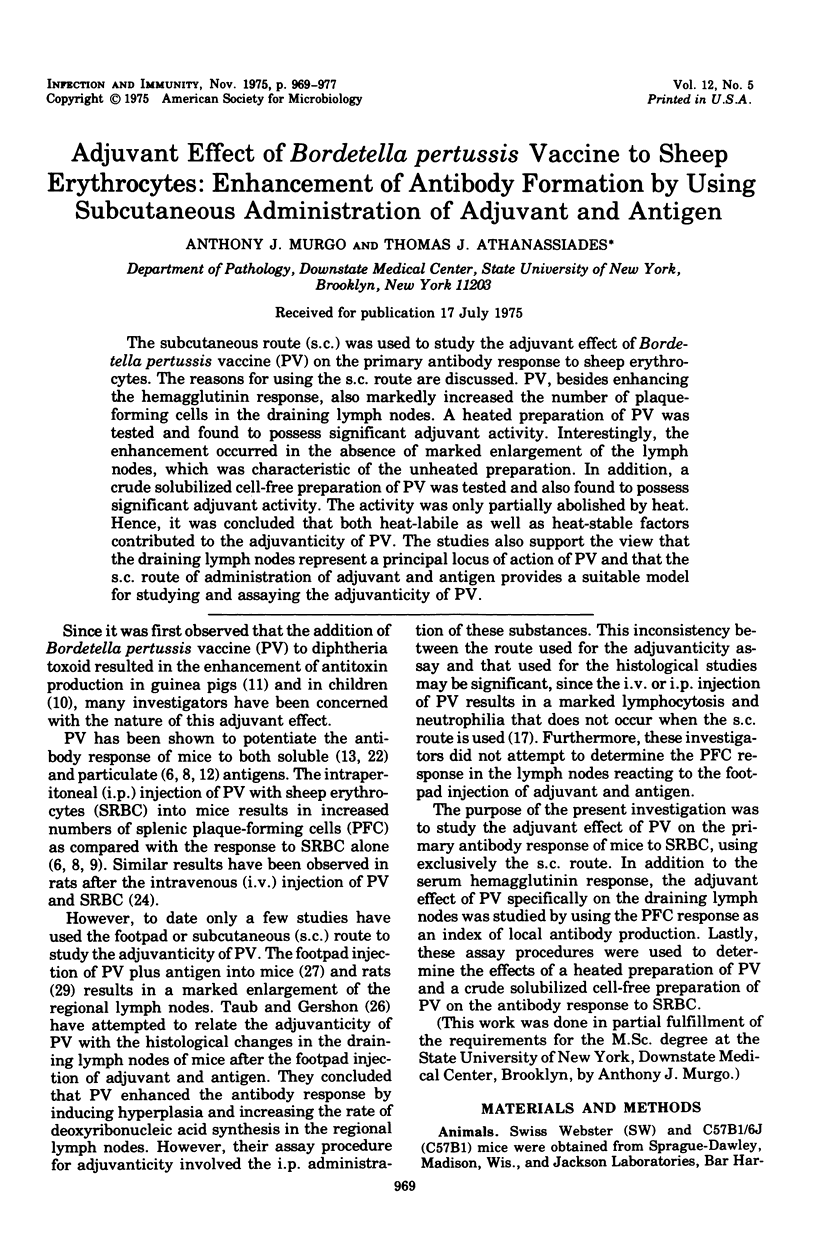
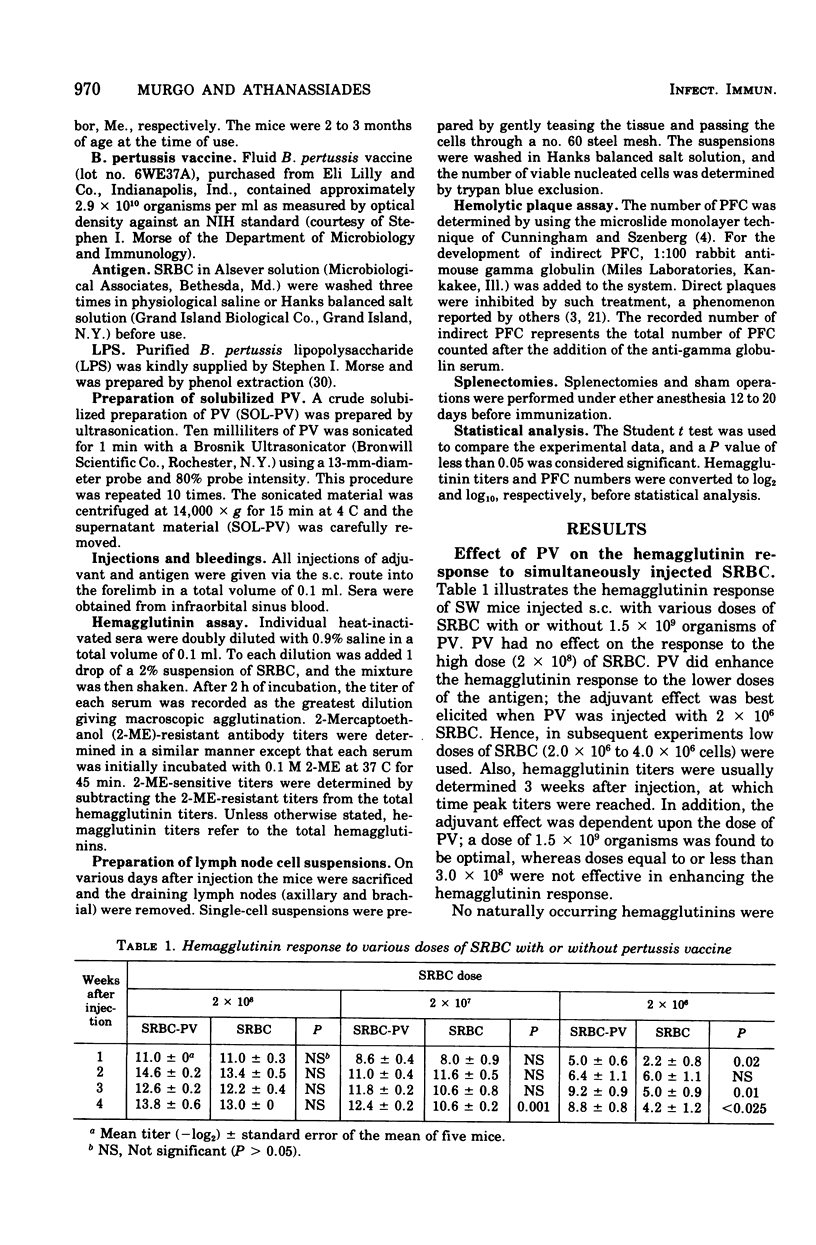
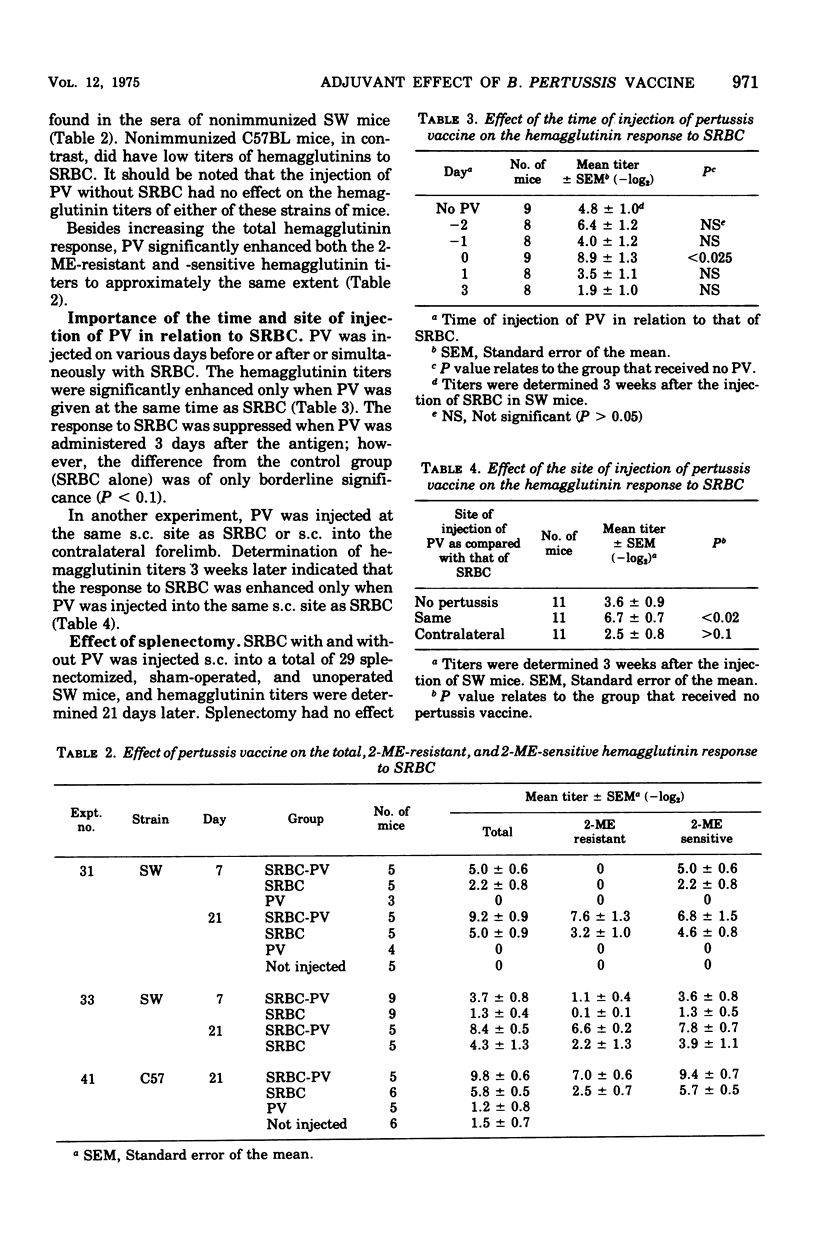
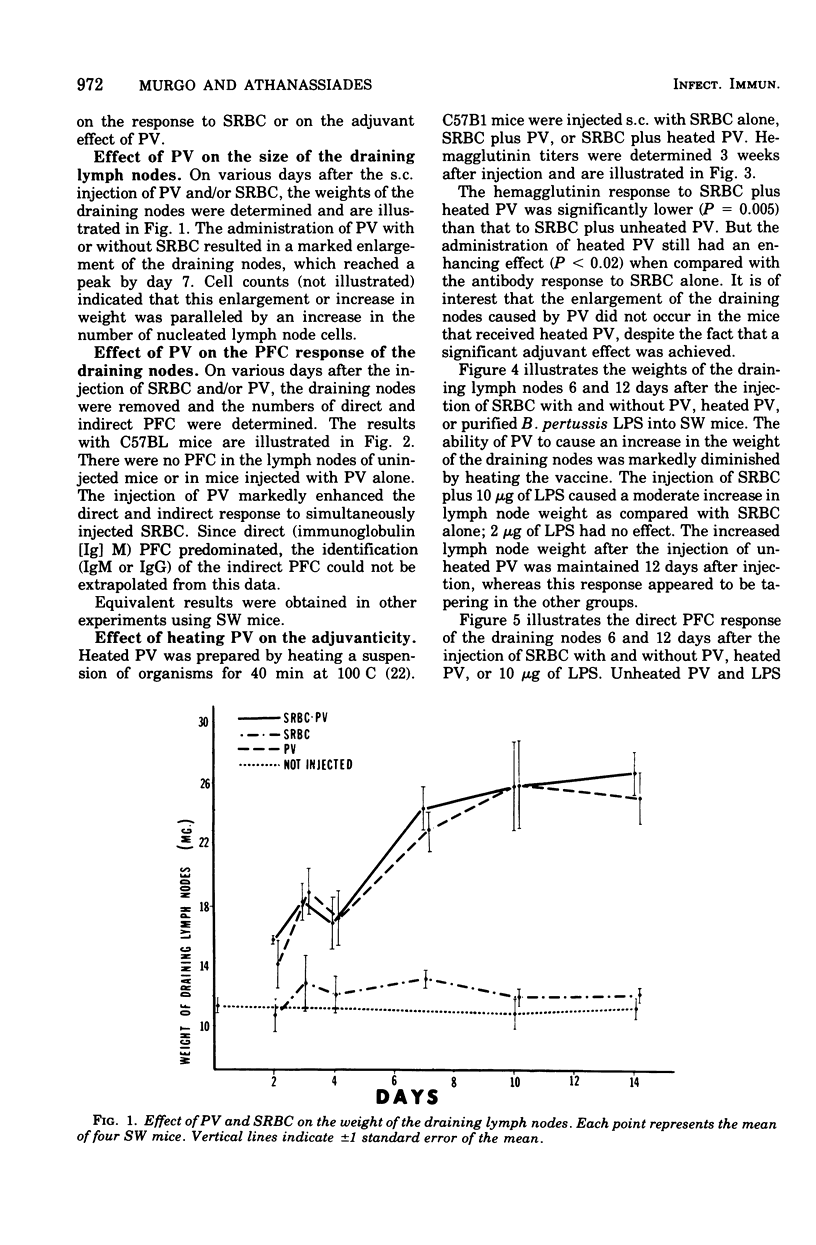
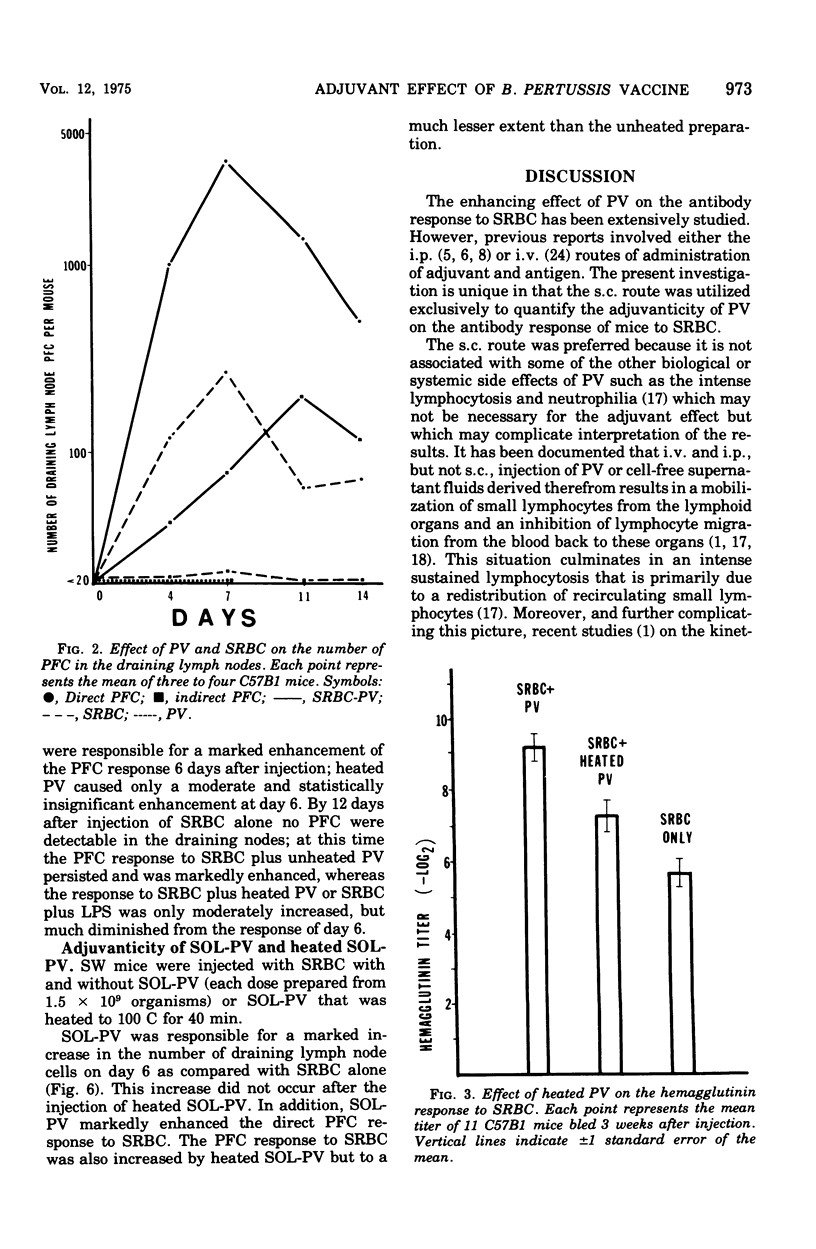
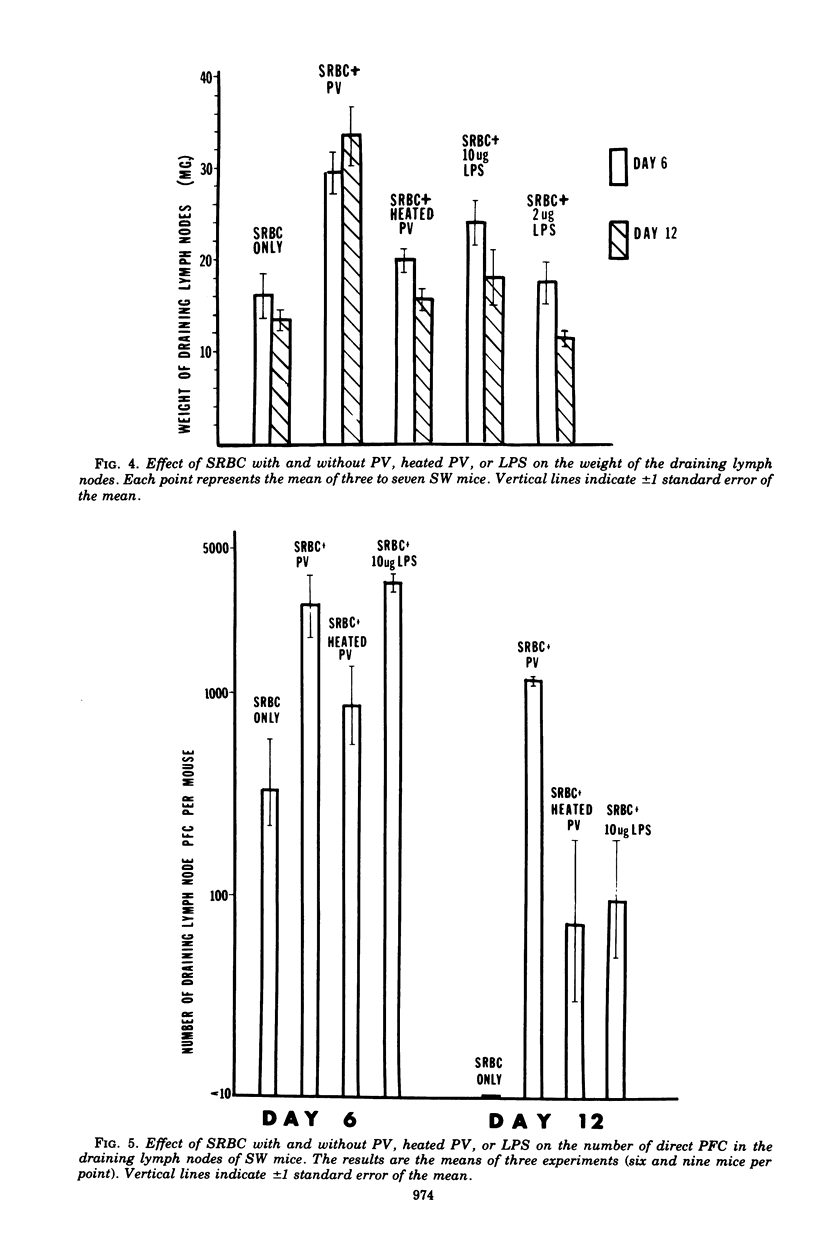
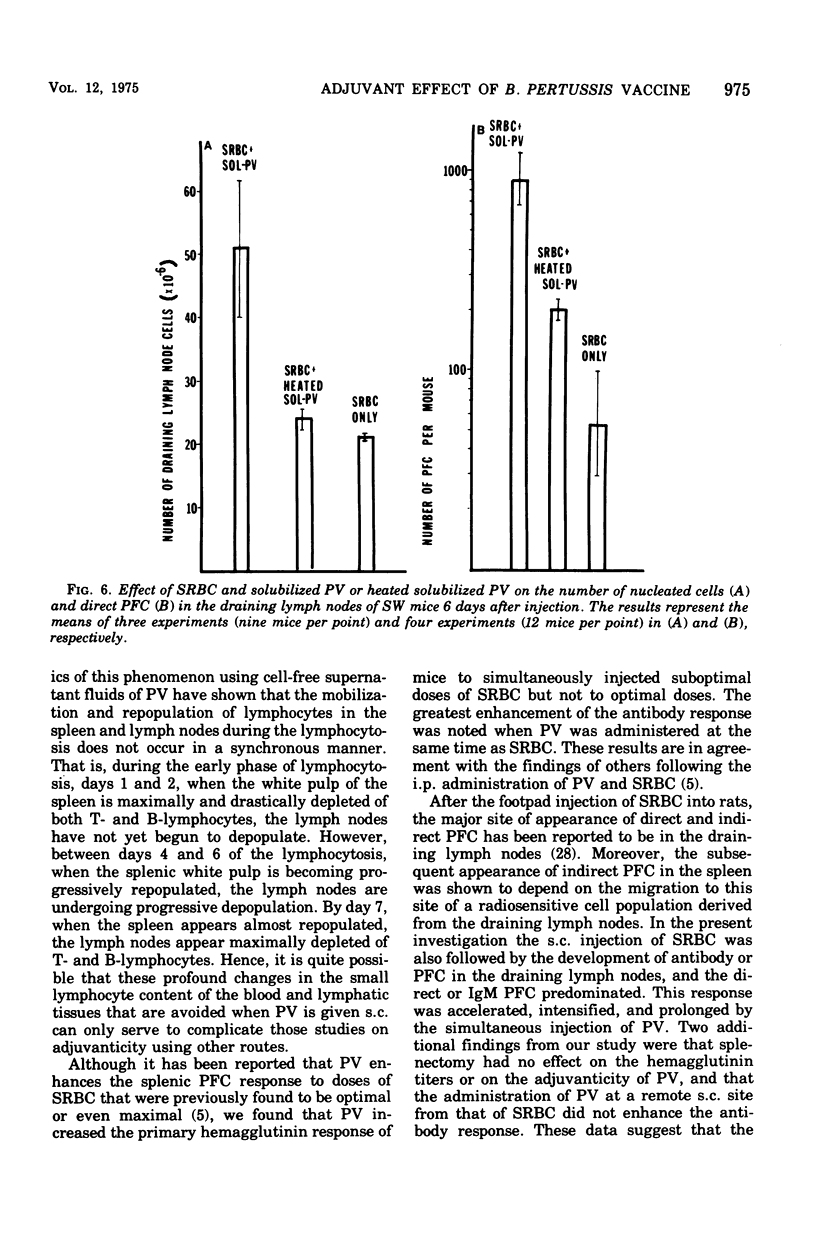
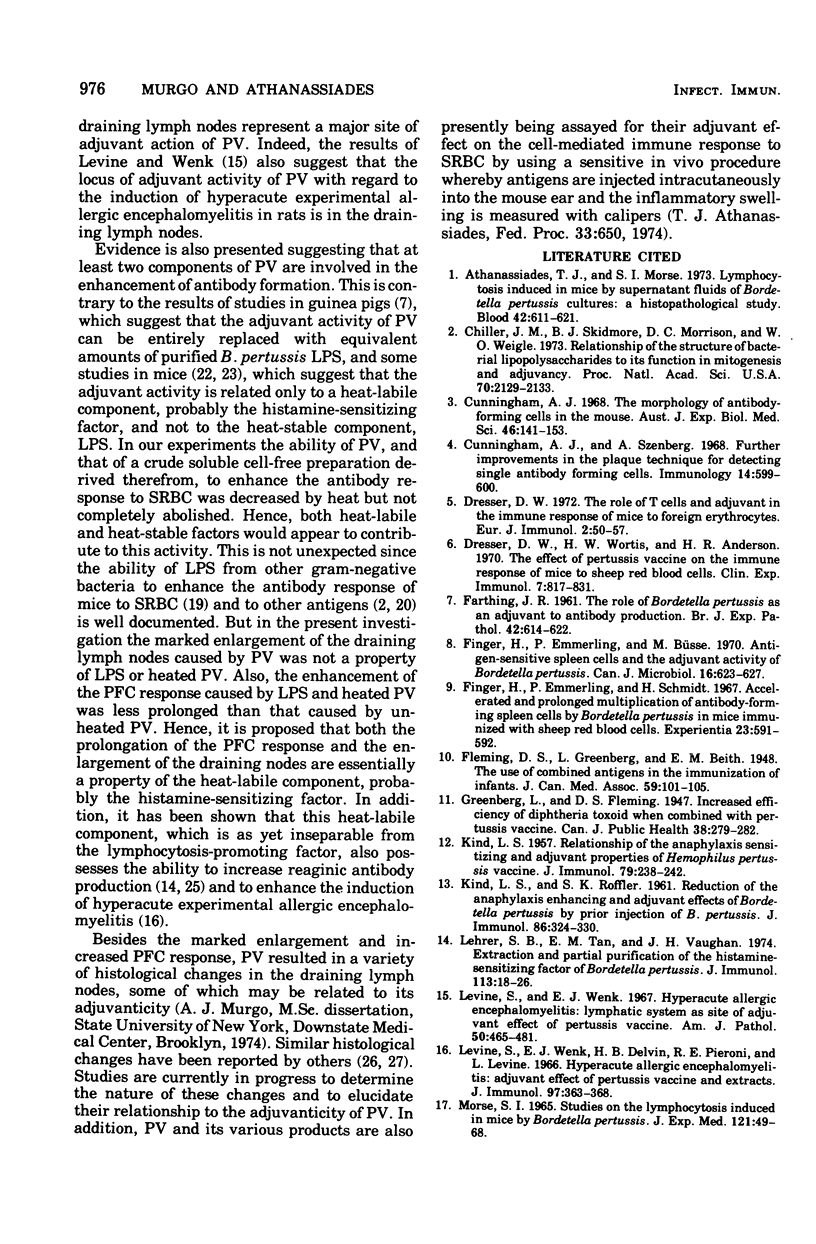
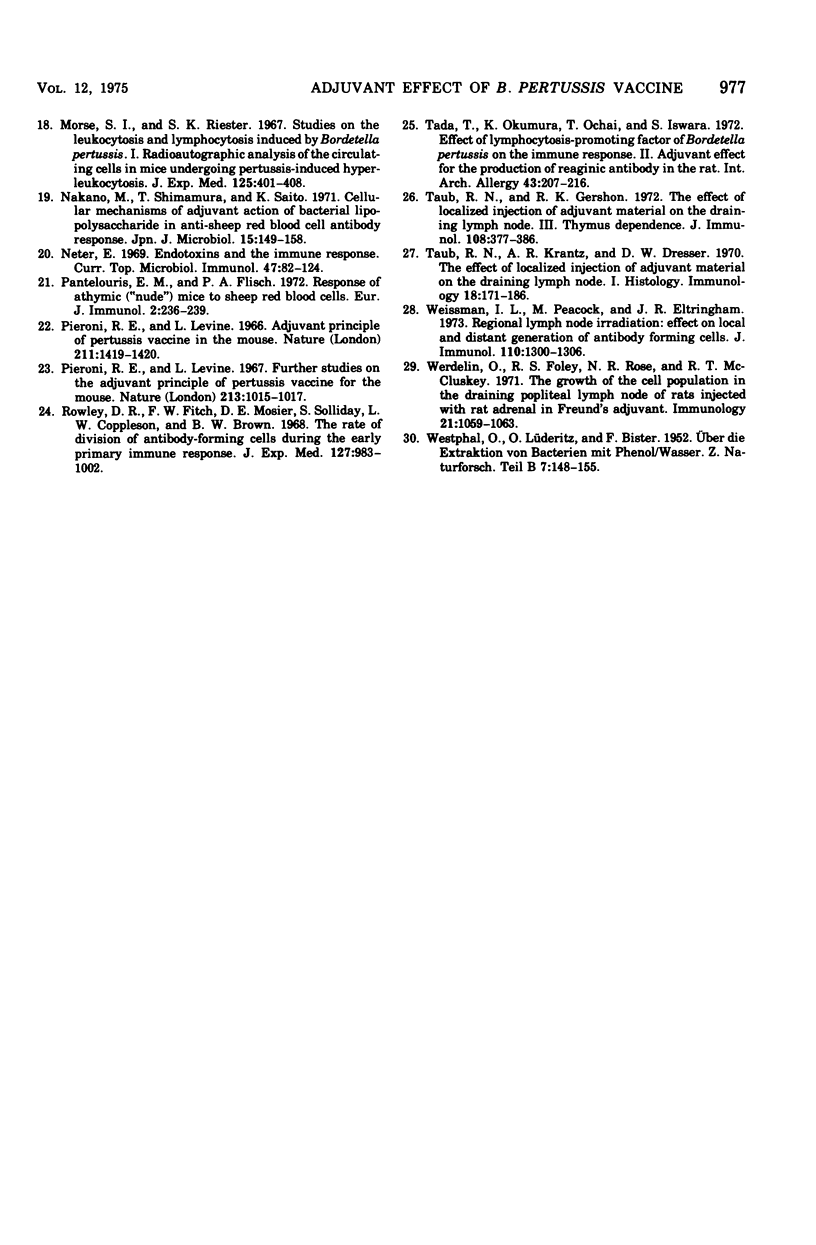
Selected References
These references are in PubMed. This may not be the complete list of references from this article.
- Athanassiades T. J., Morse S. I. Lymphocytosis induced in mice by supernatant fluids of Bordetella pertussis cultures: a histopathological study. Blood. 1973 Oct;42(4):611–621. [PubMed] [Google Scholar]
- Chiller J. M., Skidmore B. J., Morrison D. C., Weigle W. O. Relationship of the structure of bacterial lipopolysaccharides to its function in mitogenesis and adjuvanticity. Proc Natl Acad Sci U S A. 1973 Jul;70(7):2129–2133. doi: 10.1073/pnas.70.7.2129. [DOI] [PMC free article] [PubMed] [Google Scholar]
- Cunningham A. J., Szenberg A. Further improvements in the plaque technique for detecting single antibody-forming cells. Immunology. 1968 Apr;14(4):599–600. [PMC free article] [PubMed] [Google Scholar]
- Cunningham A. J. The morphology of antibody-forming cells in the mouse. Aust J Exp Biol Med Sci. 1968 Apr;46(2):141–153. doi: 10.1038/icb.1968.12. [DOI] [PubMed] [Google Scholar]
- Dresser D. W. The role of T cells and adjuvant in the immune response of mice to foreign erythrocytes. Eur J Immunol. 1972 Feb;2(1):50–57. doi: 10.1002/eji.1830020111. [DOI] [PubMed] [Google Scholar]
- Dresser D. W., Wortis H. H., Anderson H. R. The effect of pertussis vaccine on the immune response of mice to sheep red blood cells. Clin Exp Immunol. 1970 Dec;7(6):817–831. [PMC free article] [PubMed] [Google Scholar]
- FARTHING J. R. The role of Bordetella pertussis as an adjuvant to antibody production. Br J Exp Pathol. 1961 Dec;42:614–622. [PMC free article] [PubMed] [Google Scholar]
- FLEMING D. S., GREENBERG L., BEITH E. M. The use of combined antigens in the immunization of infants. Can Med Assoc J. 1948 Aug;59(2):101–105. [PMC free article] [PubMed] [Google Scholar]
- Finger H., Emmerling P., Büsse M. Antigen-sensitive spleen cells and the adjuvant activity of Bordetella pertussis. Can J Microbiol. 1970 Jul;16(7):623–627. doi: 10.1139/m70-105. [DOI] [PubMed] [Google Scholar]
- Finger H., Emmerling P., Schmidt H. Accelerated and prolongated multiplication of antibody-forming spleen cells by Bordetella pertussis in mice immunized with sheep red blood cells. Experientia. 1967 Jul 15;23(7):591–592. doi: 10.1007/BF02137991. [DOI] [PubMed] [Google Scholar]
- KIND L. S., ROFFLER S. K. Reduction of the anaphylaxis enhancing and adjuvant effects of Bordetella pertussis by a prior injection of B. pertussis. J Immunol. 1961 Mar;86:324–330. [PubMed] [Google Scholar]
- KIND L. S. Relationship of the anaphylaxis sensitizing and adjuvant properties of Hemophilus pertussis vaccine. J Immunol. 1957 Sep;79(3):238–242. [PubMed] [Google Scholar]
- Lehrer S. B., Tan E. M., Vaughan J. H. Extraction and partial purification of the histamine-sensitizing factor of Bordetella pertussis. J Immunol. 1974 Jul;113(1):18–26. [PubMed] [Google Scholar]
- Levine S., Wenk E. J., Devlin H. B., Pieroni R. E., Levine L. Hyperacute allergic encephalomyelitis: adjuvant effect of pertussis vaccines and extracts. J Immunol. 1966 Sep;97(3):363–368. [PubMed] [Google Scholar]
- Levine S., Wenk E. J. Hyperacute allergic encephalomyelitis. Lymphatic system as site of adjuvant effect of pertussis vaccine. Am J Pathol. 1967 Mar;50(3):465–483. [PMC free article] [PubMed] [Google Scholar]
- MORSE S. I. STUDIES ON THE LYMPHOCYTOSIS INDUCED IN MICE BY BORDETELLA PERTUSSIS. J Exp Med. 1965 Jan 1;121:49–68. doi: 10.1084/jem.121.1.49. [DOI] [PMC free article] [PubMed] [Google Scholar]
- Morse S. I., Riester S. K. Studies on the leukocytosis and lymphocytosis induced by Bordetella pertussis. I. Radioautographic analysis of the circulating cells in mice undergoing pertussis-induced hyperleukocytosis. J Exp Med. 1967 Mar 1;125(3):401–408. doi: 10.1084/jem.125.3.401. [DOI] [PMC free article] [PubMed] [Google Scholar]
- Nakano M., Shimamura T., Saito K. Cellular mechanisms of adjuvant action of bacterial lipopolysaccharide in anti-sheep red blood cell antibody response. Jpn J Microbiol. 1971 Mar;15(2):149–158. doi: 10.1111/j.1348-0421.1971.tb00564.x. [DOI] [PubMed] [Google Scholar]
- Neter E. Endotoxins and the immune response. Curr Top Microbiol Immunol. 1969;47:82–124. doi: 10.1007/978-3-642-46160-6_5. [DOI] [PubMed] [Google Scholar]
- Pantelouris E. M., Flisch P. A. Responses of athymic ("nude") mice to sheep red blood cells. Eur J Immunol. 1972 Jun;2(3):236–239. doi: 10.1002/eji.1830020308. [DOI] [PubMed] [Google Scholar]
- Pieroni R. E., Levine L. Adjuvant principle of pertussis vaccine in the mouse. Nature. 1966 Sep 24;211(5056):1419–1420. doi: 10.1038/2111419a0. [DOI] [PubMed] [Google Scholar]
- Rowley D. A., Fitch F. W., Mosier D. E., Solliday S., Coppleson L. W., Brown B. W. The rate of division of antibody-forming cells during the early primary immune response. J Exp Med. 1968 May 1;127(5):983–1002. doi: 10.1084/jem.127.5.983. [DOI] [PMC free article] [PubMed] [Google Scholar]
- Tada T., Okumura K., Ochiai T., Iwasa S. Effect of lymphocytosis-promoting factor of Bordetella pertussis on the immune response. II. Adjuvant effect for the production of reaginic antibody in the rat. Int Arch Allergy Appl Immunol. 1972;43(2):207–216. doi: 10.1159/000230838. [DOI] [PubMed] [Google Scholar]
- Taub R. N., Gershon R. K. The effect of localized injection of adjuvant material on the draining lymph node. 3. Thymus dependence. J Immunol. 1972 Feb;108(2):377–386. [PubMed] [Google Scholar]
- Taub R. N., Krantz A. R., Dresser D. W. The effect of localized injection of adjuvant material on the draining lymph node. I. Histology. Immunology. 1970 Feb;18(2):171–186. [PMC free article] [PubMed] [Google Scholar]
- Weissman I. L., Peacock M., Eltringham J. R. Regional lymph node irradiation: effect on local and distant generation of antibody forming cells. J Immunol. 1973 May;110(5):1300–1306. [PubMed] [Google Scholar]
- Werdelin O., Foley P. S., Rose N. R., McCluskey R. T. The growth of the cell population in the draining popliteal lymph node of rats injected with rat adrenal in Freund's Adjuvant. Immunology. 1971 Dec;21(6):1059–1063. [PMC free article] [PubMed] [Google Scholar]


